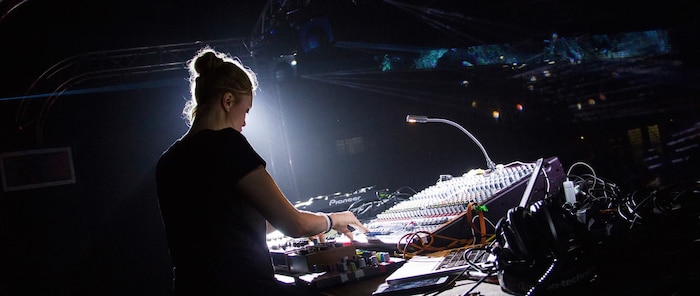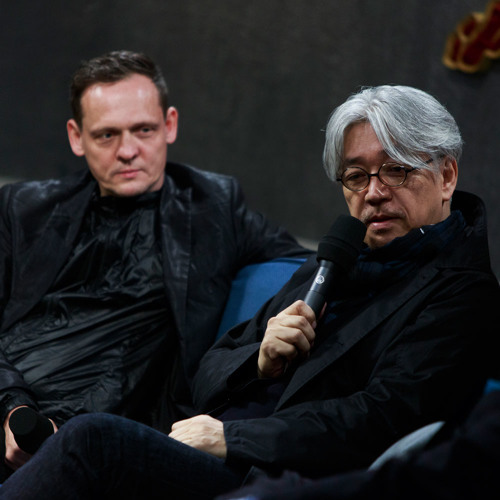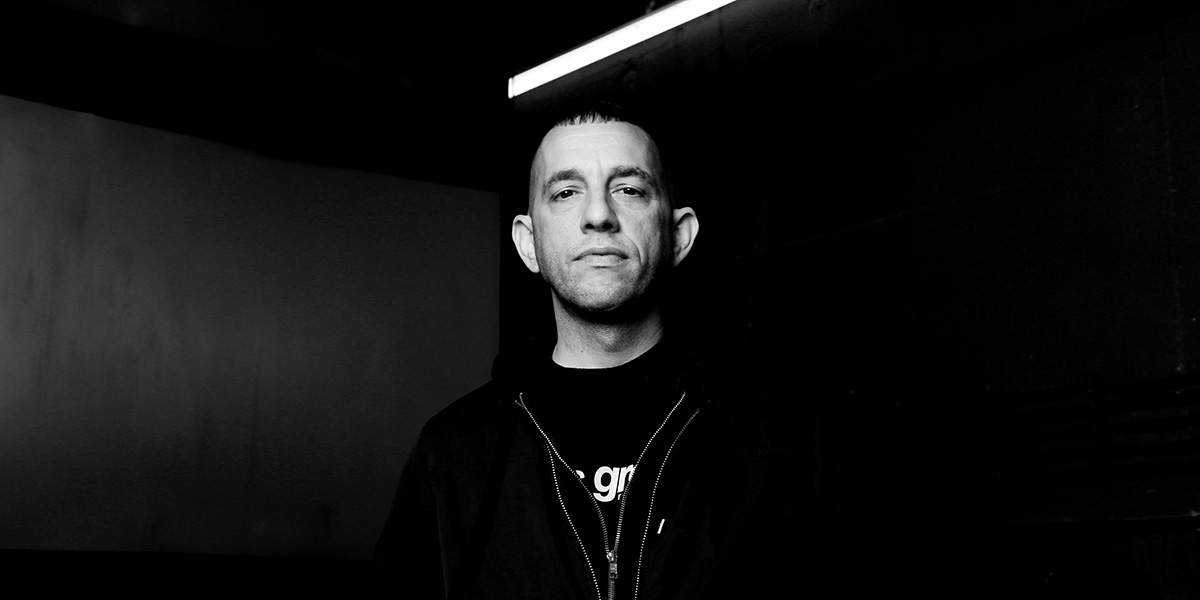Dasha Rush, In Her Own Words
The Russian techno producer talks about growing up in the Soviet Union and the happiness of letting go
Born and raised in Moscow during the final years of the Soviet Union, a young Dasha Rush was initially told that music wouldn’t be a particularly worthwhile pursuit. Once the Iron Curtain fell, however, the Russian cultural landscape changed pretty quickly, and Rush soon found herself immersed in Moscow’s nascent rave scene. At the age of 13, she took up DJing and hasn’t stopped since, even when the opportunity to model prompted a move to Paris just a few years later. Even as she became a regular on fashion runways around the globe, Dasha continued playing, and also began producing tracks of her own, later using her modeling income to finance releases and two separate labels, Hunger to Create and Fullpanda.
While Rush has remained vocally independent throughout the years, her latest LP, Sleepstep - Sonar Poems for My Sleepless Friends, surfaced last year via esteemed experimental outpost Raster-Noton. At its core, Rush’s music has always been rooted in techno, but she’s increasingly veered into the ambient realm and away from the dancefloor, especially once she began to perform live on a regular basis. She now lives in Berlin, and though her solo work continues to grab most of the attention, Rush has never shied away from collaborating, most notably with German producer Frank Hemmerling on the LADA project.
In this excerpt from her recent interview with Shawn Reynaldo for RBMA Radio, Rush reflects on the musical realities of the Soviet Union, how modeling impacted her life and why she’s always sought to be as independent as possible.
Music in the Soviet Union
I was born in Russia – at that time, it was actually the Soviet Union – in Moscow. I grew up in non-materialistic society. I’ve been curious about music since I was a child, but there were some obstacles because my parents thought that music was sort of useless and you couldn’t make a career with it. They sent me to do sports and gymnastics.
In the Soviet Union, music-wise, there was a lot of censorship. We didn’t really have access to music. You had to listen to what they give to you, what was allowed. There was this one major label called Melodiya. It was repressing all the music from foreign countries, and classic music.
When the rave scene came to Russia after the collapse of the Soviet Union, I was still very young. I was 13 or so, and I went to my first rave at age 14. It was so intense and it was so new, the musical territory, but also in terms of freedom. We could dance. At a Soviet concert, I had not been allowed to dance, even if a metal or rock band was playing. You had to sit and listen. At raves, we could dance. It was such a dream world. As a teenager, I was just so attracted to it.
It was very difficult to me to adapt [in Paris], but I think music saved me.
Modeling
Modeling was not something that I dreamed of doing. That was probably a dream for a lot of little girls, but not me. I had never thought about it, but it was a chance to escape. Well, not escape exactly, but to see the world. It was an opportunity to leave Russia and to see what was going on out there. It was in the ’90s after perestroika. Everything had collapsed, basically. People were completely disoriented. In that kind of environment, my parents decided that it would be better for me.
Paris, that was a very, very different world. I kept doing my music and trying to DJ, but I also had to start to work for the modeling agency, which was very serious, and in the beginning, it was very difficult. There were a lot of social codes about being polite and I had to learn how to react to these people. I was coming from a rough country. I was very direct and it was very difficult to me to adapt, but I think music saved me. I definitely found friends straight away and kind of had my own little world besides modeling.
For me, modeling was just a money job. I didn’t aspire to become a supermodel. I didn’t really care, which was maybe not so professional. I had troubles with my agency in the beginning. They had to explain to me that modeling is a serious job and that I had to take care of myself and not come in from a hardcore party at night. That was a time of adjustment. Somehow, we kind of found a middle ground. Also, I realized that the job did bring in really interesting money and I could be financially independent. The job actually made me feel free in what I wanted to do, so I could do whatever I want with music and not be dependent on it for money. They went along together for a long time, my modeling and my music.
Being Independent
In 2004, I opened a little label called Hunger to Create. I just decided to do it in my own. People were always saying, “Oh, could you do it like this or like that,” and I realized that “No, I’m not going to do it like this or like that. I’m just going to do it how I want.” I had an opportunity because I was earning money with modeling, so I could just press records on my own. Fullpanda came a year later in 2005.
The first record on Hunger to Create, I don’t think it made it outside of France. I didn’t know anyone. I just released music and I had to distribute it. When Fullpanda started in 2005, I got quite a bit of response because it made it to Germany and other places. I got feedback through the distributor saying, “Oh, that DJ likes your record.” Of course, I was happy that someone liked it, but it wouldn’t have stopped me if nobody had liked it at the time.
In the beginning, I just aimed for independence. I wanted to do everything myself. I wouldn’t let anyone else participate. I was sort of a young control freak. Not in a bad sense, but I probably needed to establish my own world. Then, over time, I met for example Adam X, and we kind of got along in terms of music and ideas, and eventually collaboration came. It just came naturally because there was an exchange, an interest in a musical human who had similar ideas about how it should sound. I did a few records for him. I’m still planning to do another one.
That phase where I was doing everything on my own, I guess actually changed last year because I released an album with Raster-Noton. It was a big deal for me, not because it’s a great label, but putting such a personal work into the hands of someone else, it was a little bit difficult. You have to learn how to trust these people who work with you. Still, I’m very, very, very happy that we did this together. I wouldn’t have even considered it if I didn’t like the label, of course. The label is beautiful. The people are beautiful. Finally, I’m happy that I’m not so obsessive about my control of my own work. It’s a step. It’s a step and I don’t know if it’s good or for bad, but it’s the way it is for me now.
Listen to Dasha Rush’s Fireside Chat and much more on the Beta version of the all-new RBMA Radio. Sign up for an invite code here and log in to listen.


